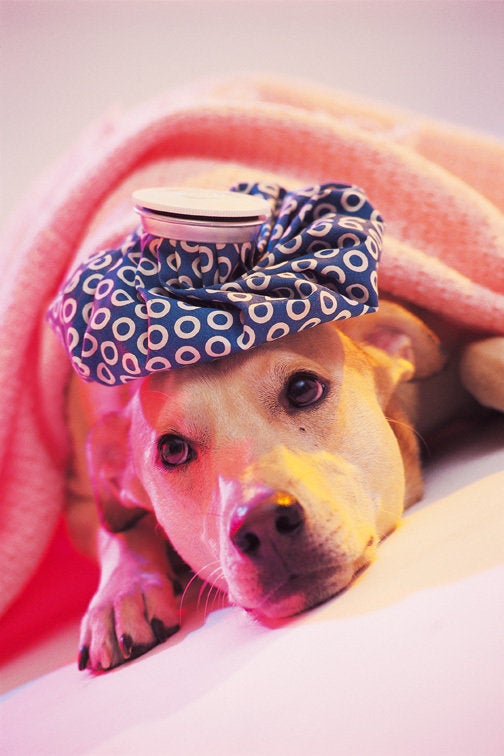
Now that school has started for students all over the country, lazy days are replaced with the hustle and bustle of the fall season. While everyone heads off in their separate directions and shifts their focus to new assignments, opportunities and after-school activities, family pets are often left alone for the day, and can sometimes experience severe separation anxiety.
This can be a particular problem for dogs who have had to change homes before being adopted into their current families. It's difficult for many pets who have come from difficult backgrounds to finally get settled into routines. And then that routines change when it's back-to-school time, adding to their anxiety. Furthermore, some pets feel the effects even more strongly when their favorite companions leave for college, and they are confused as to why their best friends are no longer around.
How do you know if your pet is being affected? If you notice behavioral changes in your pet, such as chewing on items that smell like his or her companion or going to the bathroom in inappropriate places, he or she may have a case of the "back-to-school blues." Other symptoms include:
•Persistent barking or howling when left alone
•Chewing on objects, door frames or window sills, or digging at doors and doorways
•Pacing, either in circular patterns or back and forth in straight lines
•Trying to escape from an area when he is alone or separated from his guardian
Symptoms of separation anxiety should not be taken lightly. Too often, we hear stories of beloved family animals who try escaping to find their people and end up getting lost or injured. With that in mind, it is important to take action if your pet experiences difficulty when you or one of your family members leaves. Below are a few suggestions from Petfinder.com:
•Practice gradual departures. Many pets can overcome separation anxiety with desensitization techniques. Begin by going about your normal departure activities, such as getting your keys and grabbing your purse or wallet, and then sitting back down. Repeat this step until your dog shows no distress in response to your activities. Next, engage in these same departure activities and go to the door and open it and then sit back down. Continue step by step - walk outside the door leaving it open and then return. When your pet is able to handle this much, close the door and immediately come back. Practice leaving over and over, moving up from one minute, to 10 minutes and then finally to short absences of 30 or 90 minutes. Once he is comfortable with you being gone for an hour and a half, he should be able to handle longer intervals alone.
•Exercise with your dog. Play or exercise with your dog before heading off to work or school. Then, after feeding him, scale back your attention to the point of ignoring him during the last 15 minutes before you leave. Go about your departure routine, and then simply whisper "be good" before leaving the house. A tired dog is less likely to experience stress when you head out.
•Provide a safety-cue. Come up with a word or action that you use every time you leave that tells your dog you'll be back. This is called a "safety-cue." Dogs are usually able to associate certain cues with short absences by their pet parents. For example, when you take out the trash, your dog likely recognizes your actions and realizes you will come back immediately. Choose a specific phrase or action that you can remember to do every day.
•Invest in entertainment. Leave something to divert your pet's attention when the family is at work or school, such as a pet-sitting video. Another great product is the Kong toy, which keeps dogs busy as they search for treats inside. If your pet is distracted and happy, he will not notice that you are gone.
Fortunately, when you first bring a pet into your family, there are actions you can take to prevent him from ever feeling separation anxiety before it becomes a problem. These exercises are actually very simple and can help you avoid mistakes most pet parents don't even realize they are making.
•Act nonchalant. Don't make a big deal about leaving, and only leave your pet alone for short periods of time at first. When you come home, simply greet him and return to your routine.
•Promote independence. Both adults and children can actually over-bond with their pets by spending every moment with them. While your family should certainly show love and affection to your animal, remember that independence is healthy. Place your dog in a sit-stay or down-stay position to keep him from following you and your family members around the house, and then praise him quietly when you return to the room he's in.
Because separation anxiety can be more of a concern for adopted animals, this is an issue that is near and dear to everyone's heart at Petfinder.com. It is important to remember that separation anxiety among pets is not necessarily the result of a lack of training. It also does not mean your pet is behaving badly, so it is crucial to not punish your animal if he begins acting out when you leave. Instead, separation anxiety is a psychological condition that needs to be treated carefully, with patience and a lot of love.